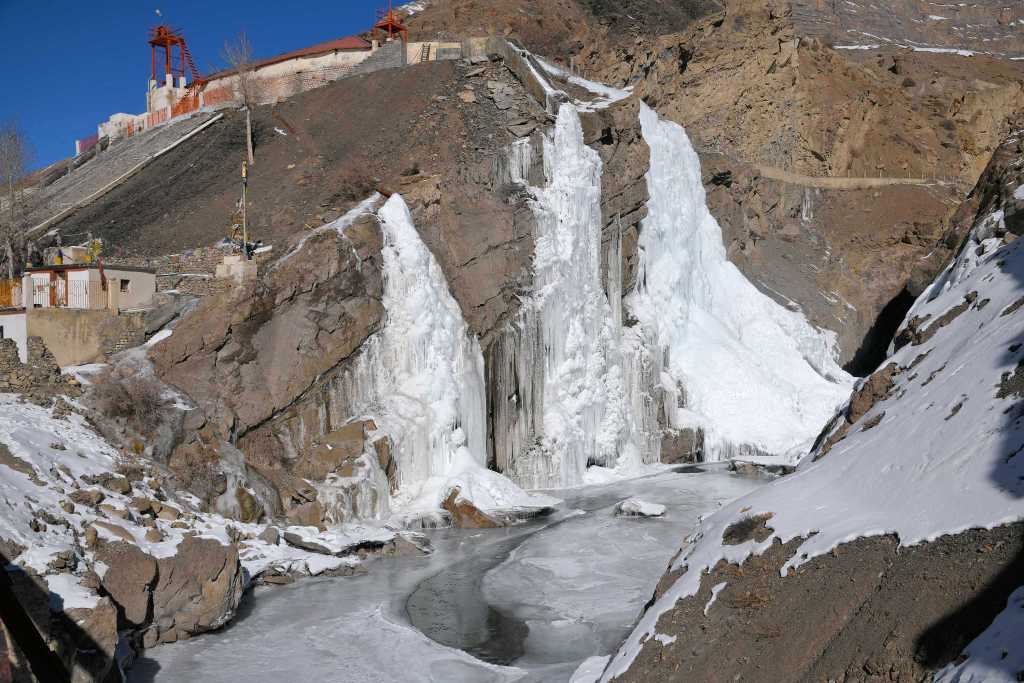What Is The Best Time To Visit Spiti Valley in Winter and in Summer?
While any season or month is good to visit Spiti, May to October period is the best time to visit Spiti valley due to many reasons.
People in Spiti virtually experience only two seasons — summers and winters. During winters, Spiti valley in Winters receives long spells of snowfall and experiences sub-zero temperatures.
Spiti Snow Drive ExpeditionExtreme weather events like blizzards, snowstorms, and freezing temperatures are the norm during winters in this part of the north-eastern Himachal. Braving such adverse and inhospitable weather conditions warrants prior experience of traveling or trekking in high altitude Himalayan regions.


Why Summer Is The Best Time To Visit Spiti Valley?
Summer is the best season to visit Spiti valley for:
- Many regions (like Kunzum and Chandratal lake) of Spiti valley remains inaccessible during winters.
- Road connectivity and electricity supply get snapped after a long spell of snowfall. During such times you could get stuck for weeks in Spiti.
- You would miss the summer festivals of Spiti — like Gutar or Gustar festival of Ki village — that happens during summers.
- The circuit of Spiti valley is only possible during summers.
Best Places To Visit In Spiti During Summer
- Tabo monastery
- Pin Valley
- Key Monastery
- Dhankar Gompa
- Kibber-Langza-Komic
Spiti Valley has become the prime destination for solitude seekers. Since the last decade or so, the high altitude Himalayan cold-desert valley has gained immense popularity for the obvious reasons — magnificent mountain vistas, lesser crowds, prominent Greater & Trans-Himalayan peaks and glaciers, and distinctive Buddhist religious and cultural mores that are so ingrained among Spitians that you can feel it in the air.

For the uninitiated, Spiti is a valley of infinite beauty located along the Indo-Tibetan border of Himachal Pradesh state of India. In a nutshell, Spiti valley is outlined by:
- Towering Himalayan mountains
- Insanely broad landscapes
- Long glaciers
- Deep gorges
- High-altitude lakes and meadows
- Precipitous passes and trekking trails
- High altitude regions that stay snow-clad for the most part of the year.

Driving to this valley is itself an unparalleled experience. To avoid going astray while driving in a region with no GPS and mobile network — some regions in Kinnaur and Spiti valley have intermittent or no mobile network connectivity — it is critically important to know the route, weather conditions beforehand.

For the people traveling from the Indian plains, there are only two road routes to reach the Spiti valley.
- The first one is through Shimla-Narkanda-Rampur Bushahr-Nako-Kaza.
- The other one is through Manali-Atal (Rohtang) Tunnel-Kunzum Pass-Kaza.

The Shimla-Kinnaur route remains open all through the year — barring a few weeks of long spells of snowfall — while the Manali–Atal Tunnel Route stays closed from December to April period because the Kunzum pass and the surrounding region experiences heavy snowfall during the winter months.
Manali-Atal Tunnel-Kunzum Pass-Kaza Road Route
This route traverses Kullu, Lahaul, and western regions of Spiti valley. Starting from Manali the road route leads you to Atal (Rohtang) Tunnel via Palchan in Solang valley. After driving for about 9 km through the Atal Tunnel, you reach the north portal of the tunnel.
From the north portal of the Atal tunnel, you need to drive over the Chandra bridge (built over the Chandrabhaga river), take a right turn, and continue driving on the Manali-Leh highway for about 12 km until you reach Gramphu — the start point of NH505.
Gramphu to Kaza is a straight drive of about 136 km on NH505. This route stays open for about 6-7 months i.e. from May to November.
Shimla-Narkanda-Rampur Bushahr-Nako-Kaza Road Route
This route follows the British-era — constructed in the 1850s — the old HT (Hindustan-Tibet) road. The route cut across lesser Himalayan valleys of Shimla and Rampur Bushahr.
From Sainj to Khab bridge, the route runs along the Satluj river for about 190 km. Khab is where the Satluj meets Spiti river and we leave the old HT road (now known as NH5) and take the NH505 to enter into Hangrang valley of Kinnaur.
Khab bridge to Sumdu Checkpost route — the gateway to the Spiti valley — runs along the left bank of the Spiti river.
Weather And Road Conditions In April & May
Mid-April or May marks the beginning of rising temperatures and relatively pleasant weather — mean day temperature still hovers around 5-degree Celsius — and bearable temperature conditions.
Hotels and homestays start to open and people come out of long hibernation of about 5 months. This is the best time for short hikes, up-close views of snowy mountains, and easy snow drives.
Barring few stretches, the road conditions on Kinnaur-Spiti road remains mostly good during April and May month. In Spiti, there are chances of snowfall even in April month and you could come across land-slips or boulder blocked road sections.
Weather And Road Conditions In June & July
This is the best time for people traveling to Spiti valley for the very first time. The Manali-Kaza Road also gets open by the first or second week of June. High-altitude mountain lakes like Dhangkar and Chandratal become accessible from June month. The spur roads to hideaways like Langza, Hikkim, Komic, Demul, Lalung, Pin Valley, Gete, Tashigang, etc in Spiti also get open.

The Manali-Kaza road route gets open in June month. June is the best month to drive to Spiti valley. You are least likely to encounter roadblocks, rainfall triggered landslides and disruption of traffic due to slow-moving apples loaded trucks.
Weather And Road Conditions In August, September and October
In August, the roads leading to Spiti Valley — particularly in the Shivalik regions – are not in good condition. The heavy rainfall triggered landslips bring boulders, debris and gravel on the National Highway NH5 and cause frequent vehicular traffic disruption.
Road conditions in Kinnaur and Spiti valley still remain in relatively good conditions as the region lies in the rain shadow of lesser and greater Himalayan ranges.
September and October months are best for capturing sunsets, star-trails and the milky way. Stargazers and astrophotographers head to Spiti valley in September/October month as the sky is darker and photographers can choose to targets a host of space objects — nebulae, star clusters, and galaxies.
With the retreating monsoon, the road conditions become better in Shivalik and the lesser Himalayan region. The only concern during this period is vehicular traffic moving at a crawling pace due to apple-laden tailgating trucks.
Trans Himalayan Drive
Best Routes To Reach Spiti Valley
- Chandigarh – Shimla – Narkanda – Rampur – Nako – Tabo – Kaza route
- Chandigarh – Manali – Atal Tunnel – Grampu – Chatru – Kunzum pass – Kaza route.




